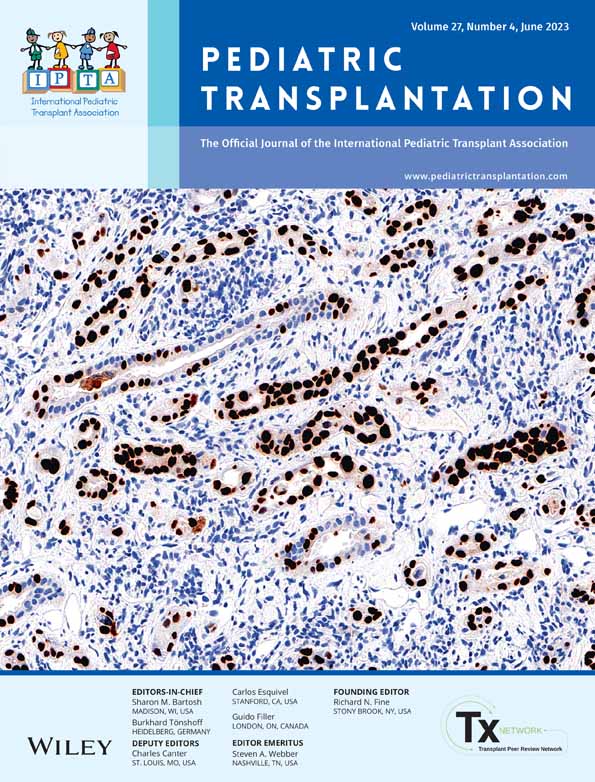A quality improvement intervention to decrease the decline in renal function in pediatric liver transplant recipients
Abstract
Background
Chronic kidney disease (CKD) impacts long-term morbidity in pediatric liver transplant (LT) recipients. The prevalence of estimated glomerular filtration rate (eGFR) < 90 mL/min/1.73 m2 (eGFR < 90) at our institution was 25% at 1 year post-LT; thus, quality improvement (QI) project was initiated, aiming to decrease the prevalence of eGFR < 90 by at least 20% at 1 year-post LT.
Methods
Children post-LT under 19 years from 2010 to 2018 were included. Three QI interventions were implemented starting 1/2016: documentation of blood pressure percentile (BP%) and eGFR, documentation of a kidney management plan if either was abnormal, and amlodipine initiation prior to hospital discharge after LT. We compared the prevalence of eGFR < 90 at 3, 12, and 24 months after LT in the pre- and post-intervention period.
Results
68 patients in pre- and 42 in post-intervention periods met inclusion criteria. Pre-intervention BP%, eGFR, and kidney management plan were documented at 25%, 10%, and 22%, compared to 71%, 83%, and 71% post-intervention, respectively. 22% of patients were started on amlodipine prior to discharge from LT in the pre- versus 74% in the post-intervention period. Prevalence of eGFR < 90 at 3 m post-LT was 19% in pre- versus 14% in the post-intervention period (p = .31); at 12 months 24% versus 7% (p = .01) and at 24 months 16% versus 6% (p = .13), respectively. Significant non-modifiable risk factors for eGFR < 90 were malignancy (RR = 4.5, p < .0001), metabolic disorder (RR = 2.6, p = .02), and age at transplant (7% increased risk per year of age, p = .007).
Conclusion
By improving documentation of BP%, eGFR, and kidney management plan, the prevalence of eGFR < 90 was decreased by a relative 74% and 60% at 12 and 24 months post-LT, respectively.
Open Research
DATA AVAILABILITY STATEMENT
The data that support the findings of this study are available from the corresponding author upon reasonable request




